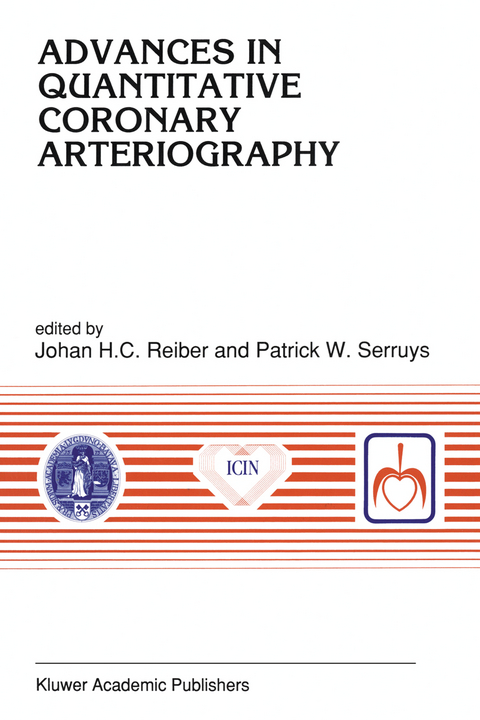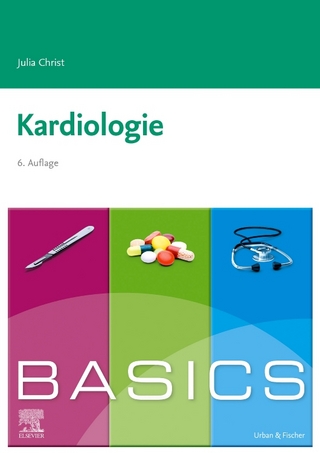
Advances in Quantitative Coronary Arteriography
Springer (Verlag)
978-94-010-4819-4 (ISBN)
One: Quantitative coronary arteriography (QCA) versus other modalities.- 1. A pathologist’s view of quantitative coronary arteriography.- 2. Angioscopy versus angiography for the detection of coronary artery disease surface morphology.- 3. Development and application of coronary intravascular ultrasound: comparison to quantitative angiography.- Two: QCA: cinefilm versus digital arteriography.- 4. Quantitative analysis of the cineangiogram: Why bother?.- 5. Quantitative coronary arteriography: equipment and technical requirements.- 6. The filmless catheterization laboratory: when will it be reality?.- Three: Quality control in QCA.- 7. Optimal frame selection for QCA.- 8. Variability of QCA-core laboratory assessment of coronary anatomy.- 9. Automated physical assessment of image quality in digital cardiac imaging.- 10. Experiences of a quantitative coronary angiographic core laboratory in restenosis prevention trials.- Four: Coronary blood flow and flow reserve.- 11. Flow and flow reserve by parametric imaging.- 12. Maximal myocardial perfusion as a measure of the functional significance of coronary artery disease.- 13. Angiographic measurement of coronary blood flow.- Five: QCA in regression/progression of atherosclerotic disease.- 14. Value and limitations of quantitative coronary angiography to assess progression or regression of coronary atherosclerosis.- 15. The impact of the calcium antagonist nifedipine on the angiographic progression of coronary artery disease — results of INTACT (International Nifedipine Trial on Anti-atherosclerotic Therapy).- 16. Progression and regression of coronary atherosclerosis: data from a controlled clinical trial with Nicardipine.- 17. Computer quantitative measurements of CLAS coronary angiograms compared to evaluation by panelsof human angiographers.- 18. A maximum confidence strategy for measuring progression and regression of coronary artery disease in clinical trials.- Six: QCA in restenosis studies.- 19. Pharmacological prevention of restenosis after percutaneous transluminal coronary angioplasty (PTCA); overview and methodological considerations.- 20. CARPORT — Coronary Artery Restenosis Prevention On Repeated Thromboxane Antagonism. A multicenter randomized clinical trial.- 21. Angiotensin converting enzyme inhibition in the prevention of restenosis: the MERCATOR and MARCATOR trials.- 22. Historic. A multicenter randomized clinical trial to evaluate feasibility and tolerability of recombinant congener of hirudin as an alternative to heparin during PTCA.- 23. Angiopeptin in experimental models of restenosis.- 24. Cyclic flow alterations and neointimal proliferation following experimental coronary stenosis and endothelial injury.- Seven: QCA after recanalization techniques in coronary arteries.- 25. The use of quantitative coronary angiography (QCA) in interventional cardiology.- 26. Quantitative coronary arteriography in laser balloon angioplasty.- 27. Quantitative coronary angiography after directional coronary atherectomy.- 28. Directional coronary atherectomy evaluation by quantitative angiography.- 29. Quantitative results and lesion morphology in coronary excimer laser angioplasty.- 30. Percutaneous transluminal coronary rotational ablation: early follow-up at 24 hours by quantitative angiography.- 31. Quantitative assessment of the residual stenosis after percutaneous transluminal coronary rotary ablation: European experience.- 32. Quantitative coronary angiography after revascularization with the Transluminal Extraction — Endarterectomy Catheter (TECTM).- Eight: QCA andintracoronary prostheses.- 33. An experimental cardiologist’s view on coronary stents.- 34. The Palmaz-SchatzTM stent.- 35. The Wallstent experience: 1986-1990.- 36 Immediate and long-term clinical and angiographic results following WiktorTM stent implantation in patients with documented restenosis of a native coronary artery lesion following prior balloon angioplasty.- 37. Coronary Gianturco-Roubin Stents.
| Reihe/Serie | Developments in Cardiovascular Medicine ; 137 |
|---|---|
| Zusatzinfo | XVI, 640 p. |
| Verlagsort | Dordrecht |
| Sprache | englisch |
| Maße | 160 x 240 mm |
| Themenwelt | Medizinische Fachgebiete ► Innere Medizin ► Kardiologie / Angiologie |
| Medizinische Fachgebiete ► Radiologie / Bildgebende Verfahren ► Radiologie | |
| ISBN-10 | 94-010-4819-3 / 9401048193 |
| ISBN-13 | 978-94-010-4819-4 / 9789401048194 |
| Zustand | Neuware |
| Haben Sie eine Frage zum Produkt? |
aus dem Bereich


